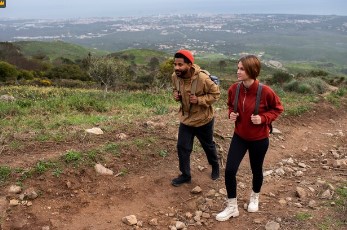Montana, with its vast horizons and tranquil way of life, stands out as an idyllic retreat for many seeking a peaceful retirement amidst nature’s grandeur. Known affectionately as “Big Sky Country,” it beckons retirees with its stunning vistas and serene lifestyle. Yet, the state’s sprawling rural landscapes present distinct challenges for its aging population, particularly when it comes to accessing essential in-home care services. These challenges are compounded by Montana’s expansive geography and sparse population density, making the provision of care for seniors who prefer to age in place a complex task. This exploration seeks to unravel the complexities of delivering in-home care in Montana’s remote locales, spotlighting the barriers, potential remedies, and spotlighting entities adept in rural eldercare.
The shifting demographics of Montana paint a picture of a state on the cusp of a significant aging phenomenon, with a notable uptick in the senior population according to the U.S. Census Bureau. This demographic evolution signifies a growing preference among the elderly to spend their twilight years within the comfort of their homes. However, the reality of Montana’s geographical vastness coupled with infrastructural limitations poses significant hurdles. From the treacherous winter weather that severs accessibility to the dearth of public transportation, the quest for in-home care in such a setting is fraught with difficulties, leaving many of Montana’s seniors in a precarious state of isolation.
Montana’s Aging Landscape: A Closer Look
Recent trends indicate a substantial growth in Montana’s senior population, placing it among the states with the quickest expanding demographic of individuals aged 65 and older, according to the U.S. Census Bureau. The desire to remain in their homes while aging is prevalent among these seniors, yet the predominantly rural character of the state poses significant barriers to fulfilling this wish. The vast distances, lack of public transportation, and harsh winter conditions exacerbate the difficulties in reaching essential services, including healthcare and in-home care, further isolating many elderly residents.
Diving into the specifics, Montana has seen its senior population swell by nearly 47% from 2010 to 2021, outstripping the national growth rate for this demographic. Seniors now make up nearly 20% of the state’s total population, with those over 60 years accounting for over a quarter of all residents. This demographic shift highlights an urgent need for innovative approaches to support aging in place, especially in areas where the provision of services is hampered by geographical challenges.
Navigating the Challenges in Rural Montana
The delivery of in-home care in Montana’s countryside is fraught with hurdles, primarily due to the extensive distances caregivers must travel to reach their clients, leading to increased costs and reduced visitation frequency. Rural seniors often contend with social isolation, a significant factor contributing to mental health issues like depression. Additionally, the scarcity of healthcare resources and professionals in these areas complicates the situation further, making it challenging to ensure consistent and comprehensive care.
Pioneering Solutions for Remote Elder Care
In response to these challenges, several strategies and organizations have emerged, focusing on bridging the care gap in rural Montana. The adoption of telehealth and remote monitoring technologies has been pivotal, enabling seniors to manage their health more effectively from home and reducing the need for frequent travel. Community-driven programs that offer assistance with daily tasks have also played a crucial role in mitigating social isolation by fostering connections among residents.
Specifically, agencies like Big Sky Home Care and Montana Elder Care have developed services tailored to the unique needs of Montana’s rural elderly, ensuring that comprehensive care extends even to the most isolated areas. These organizations, alongside initiatives aimed at supporting family caregivers, are vital components of a broader effort to make aging in place a viable option for more seniors across the state.
Forward-Looking Agencies and Initiatives
Organizations such as the Montana Rural Health Initiative and Home Instead Senior Care have been instrumental in enhancing the provision of in-home care, offering resources, education, and personalized services to meet the diverse needs of Montana’s aging population. The Senior Corps of Montana, leveraging a volunteer-driven model, exemplifies how community engagement can address the practical needs of the elderly while promoting social interaction and support.
Conclusion: Charting a Path Forward in Rural Senior Care
As Montana strides into the future, the collective resolve to address the complexities of rural eldercare is more critical than ever. The state’s unique geographical and demographic landscape calls for a continued evolution of care strategies, ensuring that the serene retirement many envision in “Big Sky Country” does not come at the cost of accessible and quality in-home care. The journey is undoubtedly challenging, marked by the need for innovative solutions, community engagement, and dedicated caregiving entities that can navigate the vastness of Montana to deliver care. Yet, the strides made thus far signal a promising trajectory towards a supportive, inclusive environment where seniors can truly thrive in their homes, surrounded by the natural beauty that defines Montana.
This forward momentum is underpinned by a growing network of agencies, technology-driven solutions, and community initiatives aimed at enriching the lives of Montana’s aging population. As these efforts continue to expand and evolve, they pave the way for a more connected, accessible, and compassionate landscape of eldercare in rural settings. The vision for Montana’s seniors is one of dignity, independence, and quality of life, ensuring that the tranquility and splendor of their chosen home continues to be a source of joy, not isolation, in their golden years. With a collaborative approach, the future of elderly care in Montana looks not only hopeful but vibrant, setting a precedent for rural eldercare across the nation.
 seolounge
seolounge